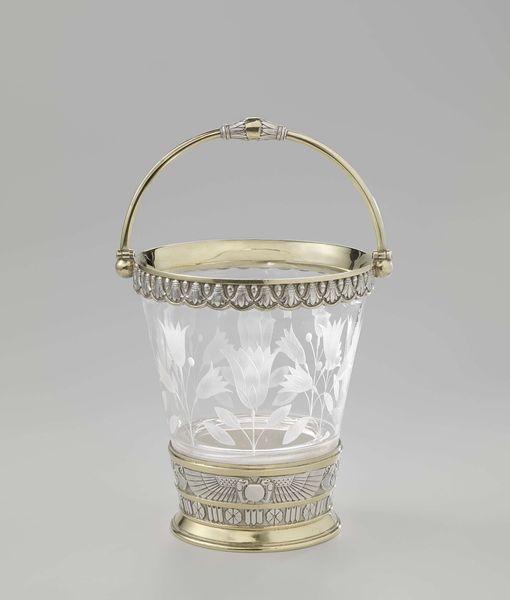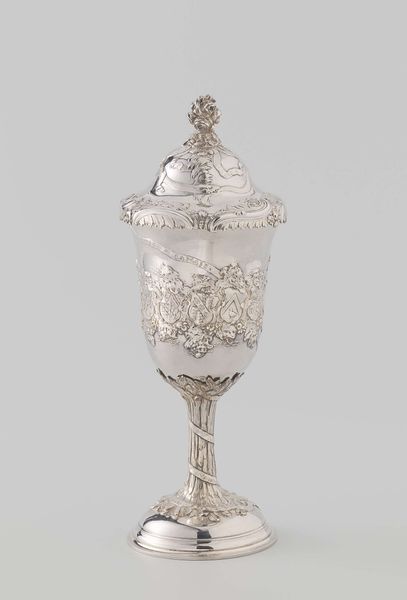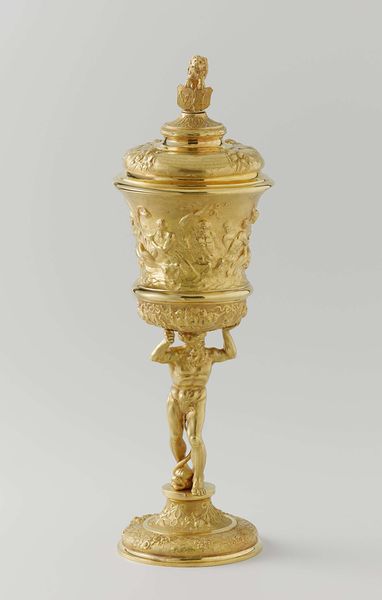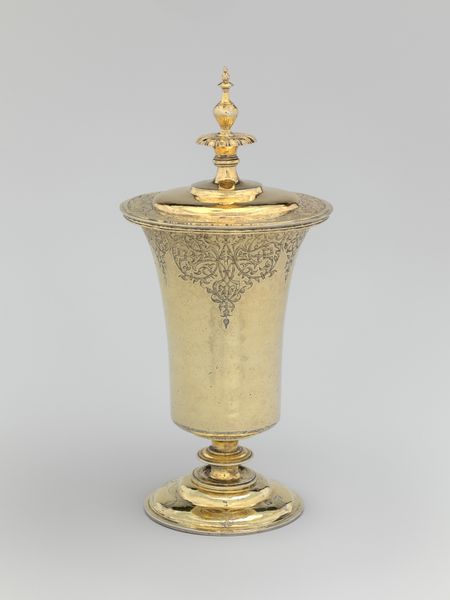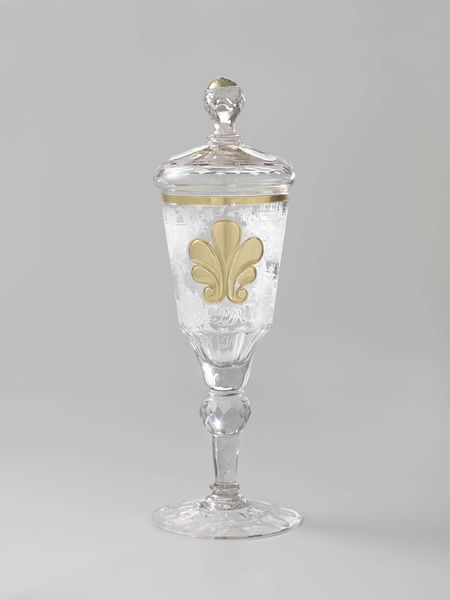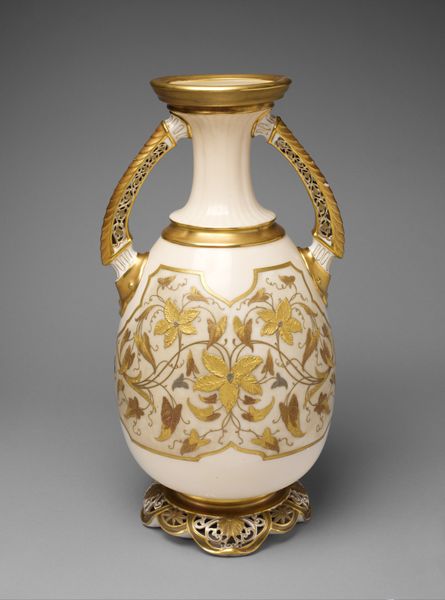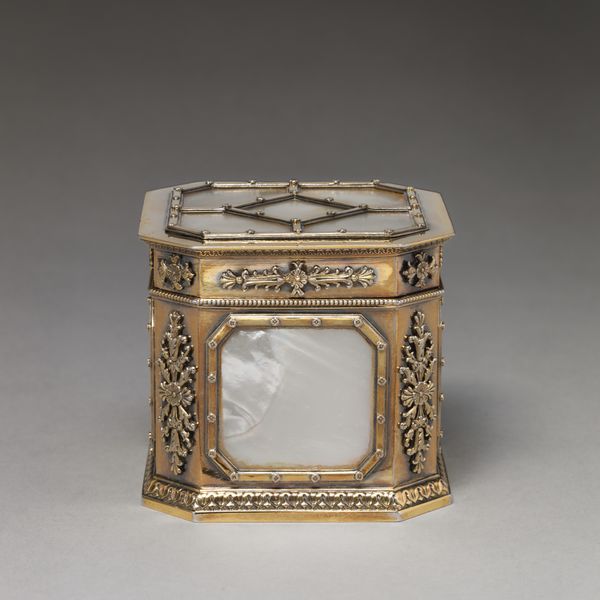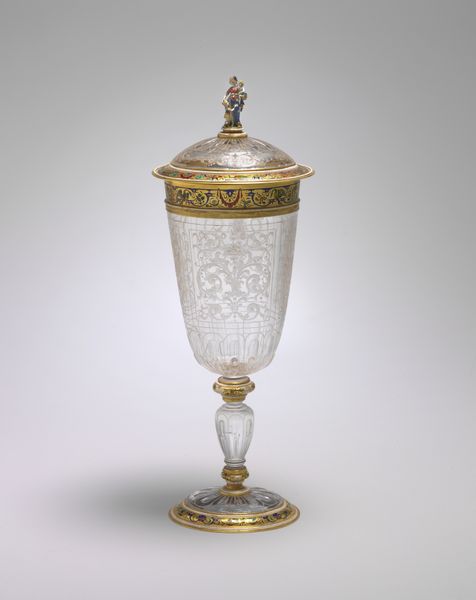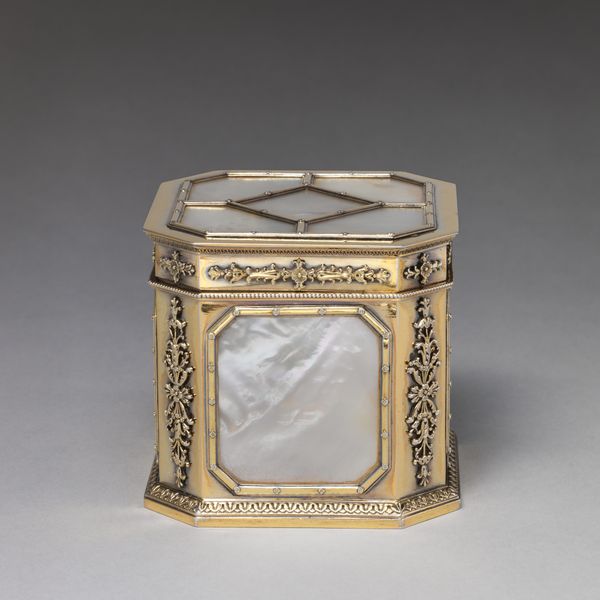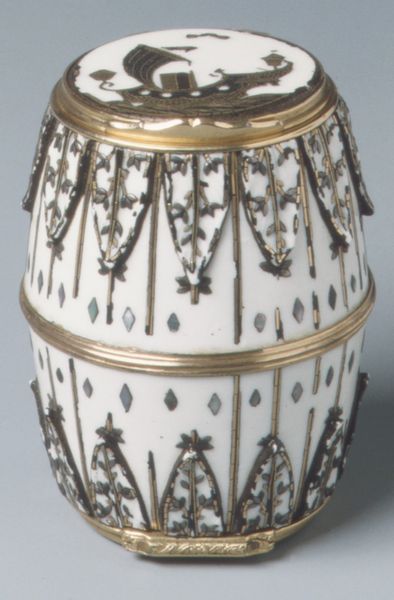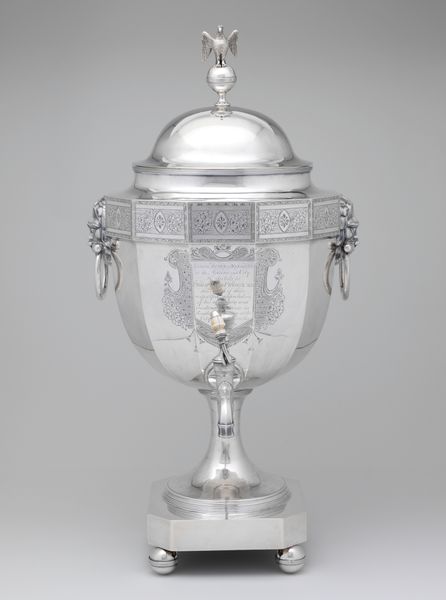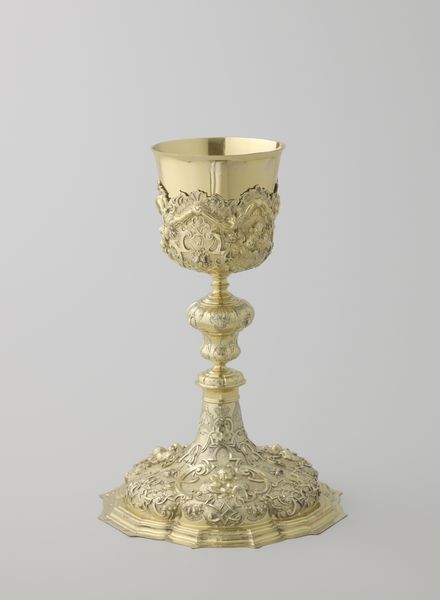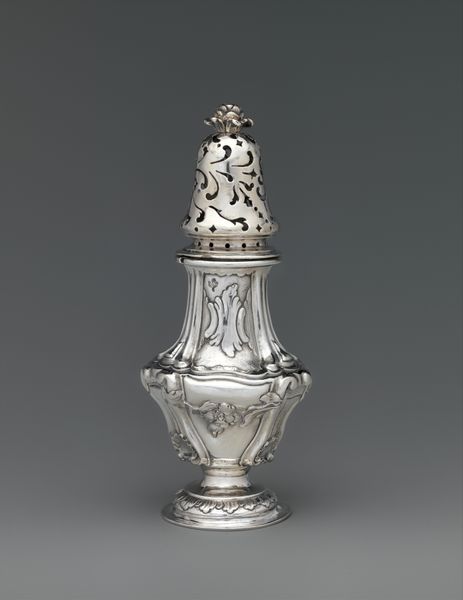
carving, metal, glass
#
carving
#
metal
#
11_renaissance
#
glass
#
decorative-art
Dimensions: height 18.5 cm, width 11.6 cm, depth 11.6 cm, diameter 11 cm
Copyright: Rijks Museum: Open Domain
Editor: So, this is a carved glass beaker, dating back to between 1500 and 1620. The delicate floral carving seems so fragile and ephemeral, especially contrasted with the rigid metal frame. What do you see in this piece, especially in the context of its time? Curator: This object speaks volumes, doesn't it? Consider the Renaissance fascination with the natural world, reborn through classical lenses. These floral motifs, carefully etched into the glass, weren’t just decorative; they were laden with symbolic meaning. Flowers, depending on their type, represented virtues, emotions, and even social standing. What feelings are evoked for you, by these precise cuttings? Editor: I feel a sense of elegance, perhaps a little bit of luxury or privilege associated with owning such a piece. And maybe also of hope and life, since it involves flowers and vegetation, such detail seems almost hopeful in tone. Curator: Exactly. This hope may speak of "hortus conclusus," the enclosed garden as a symbol for an inner, protected space of growth and contemplation, which goes way back through medieval symbolism to early Christian art. The act of carefully shaping something as brittle as glass carries deep significance, mirroring the desire to capture and hold fleeting beauty. I wonder, does that resonance endure, even now? Editor: It definitely makes me think about how we try to preserve memories or moments, even with fragile tools and methods. So, beyond the pure beauty of it, is this beaker speaking to us about our shared desires? Curator: I think that's the most profound magic of this piece; it reflects and refracts our human experience across centuries, revealing enduring desires for meaning, memory, and beauty through symbolism and creation. Editor: This has really changed how I see this simple beaker, thanks!
